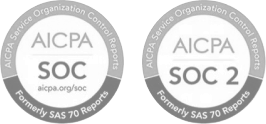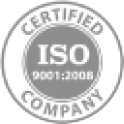
Mercans offers complete payroll, PEO and HR services in Canada
If you are an employer, trustee or payer, you will need to register for a payroll account. You are generally considered to be an employer if you pay salaries, wages (including advances) and bonuses and/or if you provide certain taxable benefits (for example, a car or allowances). Deductions have to be made on amounts you pay which must be remitted to the Canada Revenue Agency and reported on the appropriate information return.
Doing Business in Canada
As in many other countries, there are a number of steps to starting a business in Canada, including planning your business, registering or incorporating it, getting national or regional financial support and applying for business permits and licences. You may need to register with the Canadian government before you start operating. Basic details about the business need to be finalised before registering including office location, the other territories you plan to operate in and the proposed business name.
Entity Registration & Incorporation Requirements
Choose how your company operates from a range of entity types which suit your individual circumstance. Understand the different business structures available and what is best for your requirements. Register with the Canadian government before you start operating your business.
Banking
Banks are open from Monday to Friday 10 am to 4 pm.
Working Week
The standard working week is 40 hours per week usually worked from Monday to Friday
Labor Law
Overseeing the Labour Program and Service Canada, the Employment and Social Development Canada delivers programs and policies to enable Canadians to participate in learning, work and their community. A number of industries and workplaces are federally regulated. The Canada Labour Code (the Code) sets out employment conditions for hours of work, payment of wages, leaves, vacation and more, which standards apply to employees working in federally regulated businesses.
Main Industries
aerospace technology, automobiles, paper
GDP Growth
2%
Dates & Numbers
yyyy/mm/dd
Official State Name
Canada
Population
38.01 million
Capital
Ottawa
Major Languages
English and French
Currency
Canadian Dollar
Internet Domain
.ca
International Dialing Code
+1

Payroll
Employees working in federally regulated businesses and industries have certain protections for the payment of wages. Employees are able to take steps to enforce their rights, by contacting a Labour Program Office, if their employer has not complied with the Code. There is a federal minimum wage, typically the same as the general minimum wage set by each province or territory.
It is acceptable to provide employees with online pay slips
Payslip
Payroll reports must be kept for three years
Reports
2 weeks
Annual Leave
15 weeks paid sick leave
Sick Leave
15 weeks of paid maternity leave and 5 weeks of paid paternity leave
Maternity & Paternity Leave
On provision of 1 - 8 weeks notice
Employee Termination
No provision in the law
13th Salary
$15 per hour
Minimum Wage
This is paid after 44 hours worked with an increase of 1.5x the normal rate
Overtime
Shall be paid 6 days before the employment ends
Severance Pay
Tax and Social Security
Individuals resident in Canada are subject to Canadian income tax on worldwide income. Non-resident individuals are subject to Canadian income tax on income from employment in Canada as well as income from carrying on a business in Canada. Social security includes benefits such as COVID-19 benefits, employment insurance, pensions and benefits for housing, education, training, family, people with disabilities and after a death.
Tax
Employment income consists of amounts received as salary, wages, commissions, bonuses, tips, gratuities or honoraria. A T4 slip is filed for personal income tax and represents a statement of remuneration paid.
Corporate Income Tax
Personal Income Tax
Sales Tax
VAT
Social Security
Employment Insurance (EI) provides regular benefits to individuals who lose their jobs through no fault of their own, are available for work but cannot find a job. The Canada Pension Plan (CPP) is a monthly, taxable benefit that replaces part of an individual’s income when they retire. If qualified, it is paid for the remainder of the individual’s life.retirement pension. The Old Age Security pension, subject to eligibility criteria, is a monthly payment for those 65 and older.
Social Security Rate
Social Security Rate for Employers
Social Security Rate for Employees
Employment Law
Before an employer begins paying an employee, the employee will need to obtain a SIN (social insurance number), a completed Form TD1 and a Personal Tax Credits Return. The employer will need to register for a payroll account and get a payroll number to send in deductions. The employer needs to also calculate EI and income tax deductions and CPP contributions.
Employment Agreement
The Labour Program encourages employers to be compliant with the Code and enforces compliance. Additionally, federally regulated employers must follow the employment conditions for wages and other benefits set by the Code. Employers are required to keep employment and payroll records for each employee for at least 36 months.
Working condition
The Code provides rights and protections for employees in federally regulated workplaces on issues such as leave, holiday substitution and flexible work arrangements. The maximum number of hours worked in a week is 48 which can be exceeded in exceptional circumstances. Federally regulated employers must follow the employment conditions for wages and other benefits and should there be non compliance, enforcement action may be taken.
Leaves
Employees working in federally regulated industries and workplaces various leave types including maternity leave, parental leave, compassionate care leave, leaving related to critical illness, leave related to death of disappearance fo a child, personal leave, leave for court or jury duty, medical leave, bereavement leave and more. The code outlines what leave types are paid and unpaid and establishes minimum requirements. However, pension, health and disability benefits do not apply to all leaves.
Employment termination
The Code outlines the procedures to follow when terminating the employment of individual employees or for a group termination involving 50 or more employees. While federally regulated employees do not have to give their employer notice if they choose to quit, the employer must, on terminating a position, provide the employee with at least two weeks written notice or two weeks regular wages in lieu of.
1 - 8 weeks
Minimum notice period for terminating employment
5 Days
Total number of public holidays
40
Working hours per week
28
Total number of days for Compassionate & Bereavement Leave
Immigration
Businesses have a number of options when hiring in Canada, including hiring permanent foreign workers or temporary workers to fill labour or skill shortages. Canada has a flexible immigration system that helps businesses attract and retain the right talent. Newcomers with permanent resident status in Canada are authorised to work for any employer. Foreign nationals can apply for a work permit, many have employer-specific work permits (the employee can work only for the employer named on their permit) but there are also open ‘work’ permits (the employee can work for any employer in Canada).
Residency permits
A work permit is usually required in Canada, although in some cases, an individual may work without one. There is a distinction between a business person and a business visitor. A business person can do business under a free trade agreement. A business person can enter and work in Canada if they qualify under GATS (General Agreement of Trade in Services), FTAs (other free trade agreements) or CUSMA (Canada-US-Mexico Agreement).
Work Permit validity
1-2 years
Required Documents
a passport or travel document that is valid for your entire stay
a valid visitor visa
if you need an eTA, you must travel using the same passport you used in your application
letters of support from your parent company and a letter of invitation from the Canadian host business or a Letter of Recognition from the Canada Border Services Agency
warranty, service agreements or contracts relevant to your visit (where applicable)
24-hour contact details of your business host in Canada
proof that you have sufficient money for both your stay in Canada and your return journey
proof of your COVID-19 vaccination.
Build the best team and hire top talent compliantly in Canada. Get in touch with Canada payroll outsourcing & PEO specialists for a free consultation!































